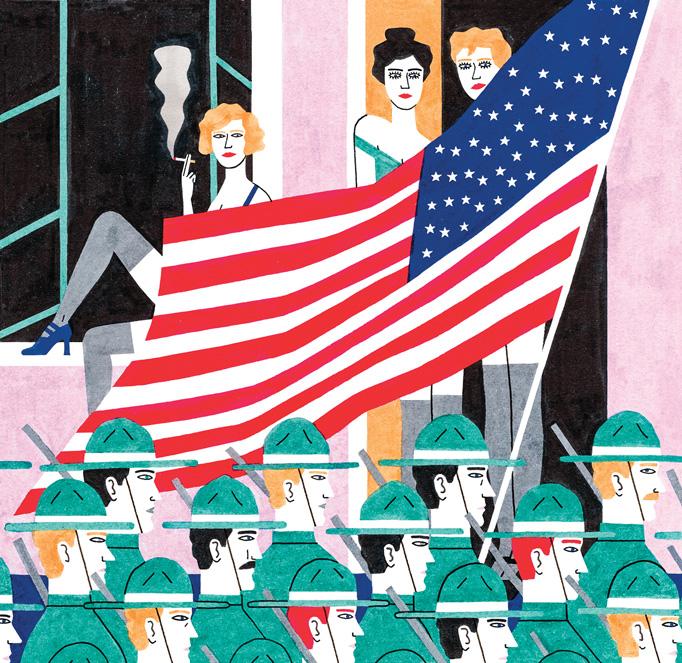
American exceptionalism, the historian Eva Payne argues, had sexual dimensions.
On Christmas Day in 1872, the atmosphere was restive among the forty female residents of a medical institution on the outskirts of St. Louis. The women were patients, not prisoners, so they wondered why they were obliged to spend the holiday as they would any other day: confined to their wards, knitting or chatting, without music or revelry of any kind. Half a dozen of the boldest ones took it upon themselves to defy the steward and the matron, and to circumvent the gatehouse guards, who were ostensibly there to prevent undesirable visitors. The women made a break for more entertaining precincts downtown, "bent on a regular old-fashioned "bender,'" as the Missouri Republican reported at the time. But the authorities quickly tracked them down. Four of them were brought back to the institution, while the remaining twoperhaps in an unruly state of intoxication-were, as the newspaper dryly put it, "left in the calaboose to ruminate upon the inscrutable ways of Providence and the police."
The institution from which the women escaped was the Social Evil Hospital, an isolation hospital for female sex workers who had tested positive for sexually transmitted diseases. The hospital had been discreetly established in the suburbs of St. Louis the previous year, as part of an innovative attempt to regulate prostitution in the city. The furnishings of the main building, where white women dwelled, were tasteful and comfortable, albeit sparely decorated. Black women were quartered separately, on the second floor of the gatehouse. The food was plentiful if plain: no oysters were served in the dining room, to the annoyance of the residents. They also chafed at the rule against smoking, and regretted the absence of a common room. Largely, though, they were reportedly more or less satisfied with their environs.
Denne historien er fra December 16, 2024-utgaven av The New Yorker.
Start din 7-dagers gratis prøveperiode på Magzter GOLD for å få tilgang til tusenvis av utvalgte premiumhistorier og 9000+ magasiner og aviser.
Allerede abonnent ? Logg på
Denne historien er fra December 16, 2024-utgaven av The New Yorker.
Start din 7-dagers gratis prøveperiode på Magzter GOLD for å få tilgang til tusenvis av utvalgte premiumhistorier og 9000+ magasiner og aviser.
Allerede abonnent? Logg på

NOTE TO SELVES
The Sonoran Desert, which covers much of the southwestern United States, is a vast expanse of arid earth where cartoonish entities-roadrunners, tumbleweeds, telephone-pole-tall succulents make occasional appearances.

THE ORCHESTRA IS THE STAR
The Berlin Philharmonic doesn't need a domineering maestro.

HEAD CASE
Paul Valéry's ascetic modernism.

LOVE FOR SALE
When America tried to get on top of the sex trade.

EACH OTHER'S BACK
\"Nickel Boys.\"

NO ROOM FOR A MASTERPIECE
Rashid Johnson's art of masculine vulnerability is going to the Guggenheim.

THE BATTLE FOR FRANCE
President Emmanuel Macron has plunged the country into chaos.

BOOK A STRESS-FREE GETAWAY
Recently refurbished houseboat. Sleeps four guests comfortably, and many more less comfortably, but it's definitely doable and safe, though no jumping all at once, please.

LEG WORK
A surgeon and an engineer reimagine the prosthetic limb.

BASIC INSTINCT
A feminist director takes on the erotic thriller.